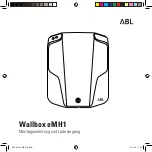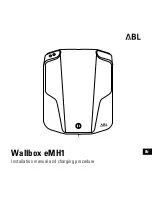
07 Wheels and tires
Vehicle loading
07
184
Loading the vehicle
Before loading your vehicle, familiarize yourself
with the following terms for determining your
vehicle's weight ratings, with or without a
trailer, from the vehicle's Federal/Canadian
Motor Vehicle Safety Standards (FMVSS/
CMVSS) label, and the vehicle's tire informa-
tion placard:
Curb weight
The weight of the vehicle including a full tank
of fuel and all standard equipment. It does not
include passengers, cargo, or optional equip-
ment.
Capacity weight
All weight added to the curb weight, including
cargo and optional equipment. When towing,
trailer hitch tongue load is also part of cargo
weight.
NOTE
For trailer towing information, please refer to
the section "Towing a trailer", see
page 160.
Permissible axle weight
The maximum allowable weight that can be
carried by a single axle (front or rear). These
numbers are shown on the Federal/Canadian
Motor Vehicle Safety Standards (FMVSS/
CMVSS) label. The total load on each axle must
never exceed its maximum permissible weight.
Gross vehicle weight (GVW)
The vehicle's curb cargo + passen-
gers.
NOTE
•
The location of the various labels in your
vehicle can be found on page 264.
•
A table listing important weight limits for
your vehicle can be found on page
267.
Steps for Determining Correct Load
Limit
1.
Locate the statement "the combined
weight of occupants and cargo should
never exceed XXX pounds" on your vehi-
cle's placard.
2.
Determine the combined weight of the
driver and passengers that will be riding in
your vehicle.
3.
Subtract the combined weight of the driver
and passengers from XXX kilograms or
XXX pounds.
4.
The resulting figure equals the available
amount of cargo and luggage load
capacity. For example, if the "XXX" amount
equals 1400 lbs. and there will be five
150 lbs. passengers in your vehicle, the
amount of available cargo and luggage
load capacity is 650 lbs. (1400–750 (5×150)
= 650 lbs.)
5.
Determine the combined weight of luggage
and cargo being loaded on the vehicle.
That weight may not safely exceed the
available cargo and luggage load capacity
calculated in Step 4.
6.
If your vehicle will be towing a trailer, load
from your trailer will be transferred to your
vehicle. Consult this manual
1
to determine
how this reduces the available cargo and
luggage load capacity of your vehicle.
1
See "Towing a trailer"
Summary of Contents for 2011 C70
Page 1: ...VOLVO C70 Owner s manual Web Edition ...
Page 2: ......
Page 8: ...Contents 8 12 12 Index Index 278 ...
Page 9: ...Contents 9 ...
Page 17: ...01 SAFETY ...
Page 47: ...02 INSTRUMENTS AND CONTROLS ...
Page 81: ...02 Instruments and controls 02 81 ...
Page 83: ...03 CLIMATE ...
Page 91: ...03 Climate 03 91 ...
Page 93: ...04 INTERIOR ...
Page 109: ...04 Interior Storage compartments 04 109 ...
Page 117: ...05 LOCKS AND ALARM ...
Page 133: ...05 Locks and alarm 05 133 ...
Page 135: ...06 STARTING AND DRIVING ...
Page 171: ...06 Starting and driving 06 171 ...
Page 173: ...07 WHEELS AND TIRES ...
Page 199: ...07 Wheels and tires 07 199 ...
Page 200: ...G020920 200 Washing and cleaning the car 202 Paint touch up 206 ...
Page 201: ...08 CAR CARE ...
Page 207: ...08 Car care 08 207 ...
Page 209: ...09 MAINTENANCE AND SERVICING ...
Page 237: ...10 AUDIO ...
Page 261: ...10 Audio 10 261 ...
Page 263: ...11 SPECIFICATIONS ...
Page 264: ...11 Specifications Label information 11 264 ...
Page 285: ......
Page 286: ...Kdakd 8Vg 8dgedgVi dc IE JH6 8VcVYV 6I Eg ciZY c HlZYZc iZWdg 8deng i Kdakd 8Vg 8dgedgVi dc ...
















































